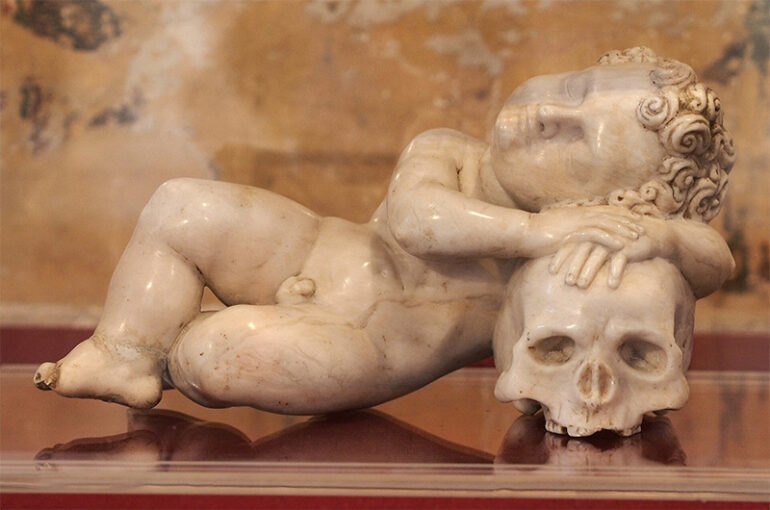The Vanitas motif in art has long offered a powerful meditation on the fleeting character of existence and the certainty of death. Through well-known motifs like hourglasses, skulls, and withering flowers, 16th and 17th-century painters have skillfully captured the frailty of human existence. Because it encourages reflection on death and the transient beauty of life’s little moments, this approach continues to fascinate audiences.
The Tradition of Vanitas in Art
Vanitas have been a moving reminder of the transient character of existence and the certainty of death for all of art history. A small few of the iconic objects that painters have skillfully captured to emphasize how transient life is include hourglasses, skeletons, and diseased flowers. For audiences of today, this 16th and 17th century custom is still relevant and encourages reflection on mortality and the transient aspect of life. These ephemeral symbols, often laden with allegorical meanings, serve as a conduit for deeper existential introspections, leading the viewer through a contemplative journey on the inevitability of decay and renewal. Additionally, the visual juxtaposition of opulence and ruin in these artworks highlights the irony of pursuing material wealth in the face of inevitable mortality.
Symbolism and Imagery of Mortality
In the arts, symbolism and imagery may be very effective ways to convey death worries. From the eerie appeal of memento mori to the delicate balance of life and death seen in still lifes, artists use a wide variety of motifs to provoke reflection on the transient character of human existence. The stark reminders of mortality juxtaposed with colorful vitality in these graphic depictions invite viewers to consider the beauty and fragility of life’s transient moments.
Contemporary Interpretations of Death and Decay
Death and decay have developed in contemporary art to represent contemporary views on mortality. By using innovative methods and theoretical frameworks, artists of today question conventional ideas of vanitas. With components of consumer culture, technology, and environmental deterioration, these interpretations provide a thorough analysis of the fleeting character of existence in a world changing quickly. This modern setting enhanced the conversation about death in art with classic symbolism.
Impact of Mortality Themes on the Viewer
Examining mortality problems in art not only depicts the human condition but also has a big effect on the viewer. The transience of life may be represented artistically to arouse a broad variety of feelings, from reflection and sadness to a better awareness of the present. A closer comprehension of the relationship between life, death, and art arises from viewers’ forced face with their own mortality via interaction with these subjects.
All things considered, the Vanitas tradition in art serves as a constant reminder of how short life is and how death is inevitable. Rich in death imagery and symbolism, artists have created incisive observations on the transient character of existence. In a fast changing world, interpretations of death and decay from today’s viewpoint keep pushing the envelope and providing complex viewpoints on mortality. In the end, the ways these issues are explored in art make viewers of these themes face their own death and value the fleeting moments in life.
Photo Attribution:
1st & featured image by https://commons.wikimedia.org/wiki/Category:Vanitas#/media/File:Vanitas_20140708.jpg
2nd image by https://commons.wikimedia.org/wiki/Category:Vanitas#/media/File:Vanitas-msu-0055-.jpg

